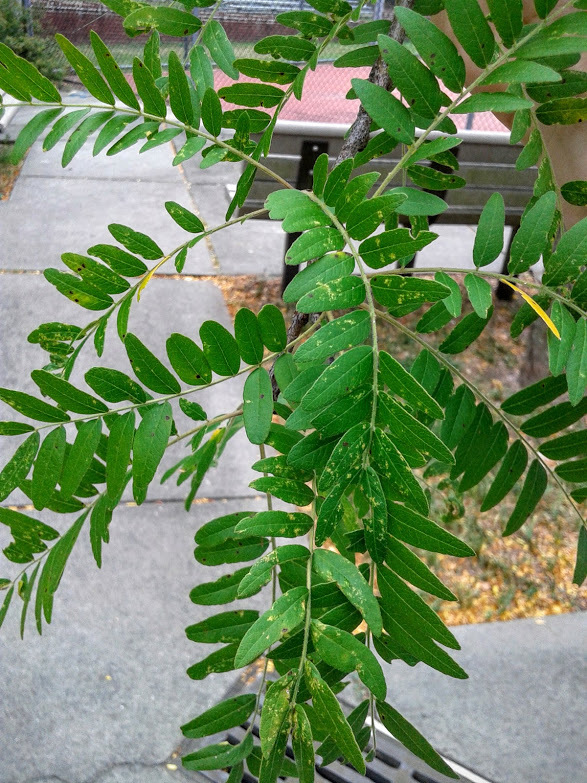I saw this in the wild. Wanted to be sure before I eat some and fall over and die, lol. It does have pods, and the leaves look similar, but I don’t know how to be 100% sure. Any moringa experts here?


I saw this in the wild. Wanted to be sure before I eat some and fall over and die, lol. It does have pods, and the leaves look similar, but I don’t know how to be 100% sure. Any moringa experts here?


it is an acacia.
moringa’s have roundish/oval leaves and have more complex compound leaf structures
Aren’t Acacia grown in warm climates? I found this tree near Philadelphia.
Well whatever this is… I agree with you that it’s not moringa. One can hope, haha. Finding a cold hardy moringa tree would be incredible.
It is very likely honey locust (Gleditsia triacanthos). Based on location and and those long seed pods. If it is is in a wild area it should have thorns up the trunk. But if it is in a place where it is planted it will most likely be thornless as there are many thornless cultivars. Bark would help in ID. They have a relatively distinct bark.
Is there a black walnut or the foreground?
Also, you can eat the pulp out of honey locust seed pods. I have never done it, but it is said to be edible.
There is also black locust. It is an invasive species out here on the plains, but native to the Appalachians and approximately the Ozark/Ouachita regions. It can be distinguished from honey locust by its smaller thorns, a bigger leaflet, showy white flowers in spring, and smaller seed pod. It also forms clonal (?) stands.
Also black locust (Robinia pseudoacacia) is toxic in its seeds and foliage.
I have some marked for the “hack and squirt” with Tordon this fall.
looks like a soapberry tree to me but it’s out of it’s native range. it’s most likely a honey locust. The black locust has a slightly rounder leaf structure
sorry didn’t see where you said long pods, now I’m 99% sure it’s honey locust
There are no thorns, but it’s in a planted spot, so I’m assuming someone takes care of that. I just looked up images of a honey locust and the pods are almost identical to what I saw earlier today. I think you hit the nail on the head with that one.
The Moringa you might have heard about through popular media is Moringa oleifera (horseradish tree).
It would not survive the Philadelphia winter.
Clinical trails have shown that to obtain health benefits from the plant you’ll need to extract a pharmaceutical dosage; i.e., the placebo effect from eating plant material is quite large in comparison to actual physiological effects.
stand corrected, and agree it is a locust.
the species ‘pseudoacacia’ sure indicates it could easily be mistaken for true acacias